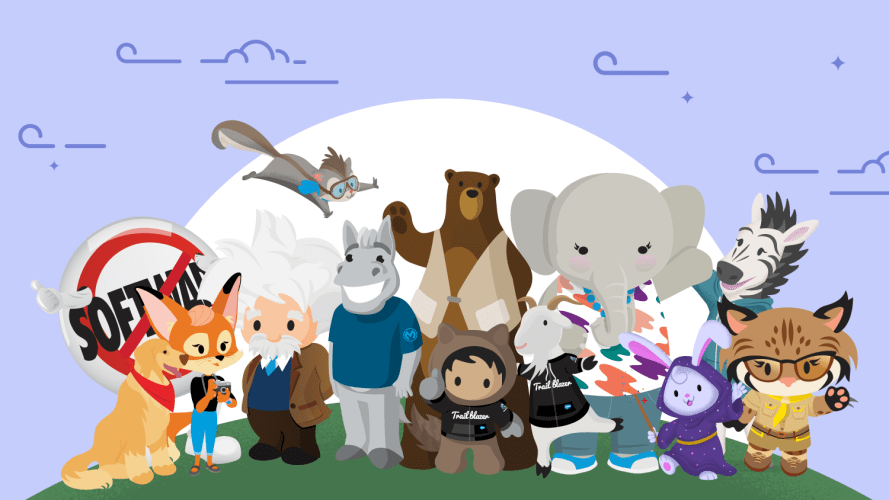4 Ways Large Language Models Help You Do More With Customer Data



Generative AI can help businesses run more efficiently and better connect with customers. Learn more about large language models, the technology that powers it all.

Kaushal Kurapati
As businesses look for ways to serve customers more efficiently, many are realizing the benefits of generative AI. This technology can help you simplify your processes, organize data, provide more personalized service, and more. What powers generative AI? Large language models (LLMs) — which allow generative AI to create new content from the data you already have.
Most importantly, generative AI technology can save time on tedious processes, so you can provide better care for your customers and focus on big-picture strategies. Let’s dig into how generative AI can help your business do more, and learn more about large language models.
AI — the way you want it
Learn how a bring your own model (BYOM) solution can help you use your company’s custom AI models to best fit your sales, service, marketing, commerce, and IT needs.



What are large language models?
Generative AI is powered by large machine learning models that are pre-trained with large amounts of data that get smarter over time. As a result, they can produce new and custom content such as audio, code, images, text, simulations, and video, depending on the data they can access and the prompts used.
To put things into everyday context, large language models provide answers depending on how a question is phrased. For example, “what are LLMs and how can they help my business?” versus “what are LLMs and what value can they bring to my business?” will yield different results. Although the questions are similar, responses can vary by context.
Because these models use natural language processing and machine learning capabilities, LLMs respond in a human-like, coherent, and relatable way. As a result, they excel in tasks such as text translation, summarization, and conversations.
With generative AI helping businesses perform these tasks, trust has to be at the core of your efforts. To make sure you’re using this technology responsibly, you can invest in a customer relationship management platform that has an AI-focused trust layer — which anonymizes data to protect customers’ privacy.
A trust layer built into a generative AI landscape can address data security, privacy, and compliance requirements. But to meet high standards, you must also follow guidelines for responsible innovation to ensure that you’re using customer data in a safe, accurate, and ethical way.
How do large language models work?
Advancements in computing infrastructure and AI continue to simplify how businesses integrate large language models into their AI landscape. While these models are trained on enormous amounts of public data, you can use prompt templates that require minimal coding to help LLMs deliver the right responses for your customers.
Furthermore, you can now create private LLMs trained on domain-specific datasets that reside in secure cloud environments. When a LLM is trained using industry data, such as for medical or pharmaceutical use, it provides responses that are relevant for that field. This way, the information the customer sees is accurate.
Private LLMs reduce the risk of data exposure during training and before the models are deployed in production. You can improve prediction accuracy by training a model on noisy data, where random values are added in the dataset to mimic real world data before it’s cleaned.
It’s also easier to maintain an individual’s data privacy using decentralized data sources that don’t have access to direct customer data. As data security and governance become a top priority, enterprise data platforms that feature a trust layer are becoming more important.
Businesses can also leverage how LLMs work with other kinds of AI. Imagine using traditional AI to predict what customers may plan to do next (based on data from past behavior and trends), and then using a LLM to translate the prediction results into actions.
For example, you can use generative AI to build personalized customer emails with offers, create marketing campaigns for a new product, summarize a service case, or write code to trigger actions such as customer recommendations.
These large language models save time and money by streamlining manual processes, freeing up your employees for more enterprising work.
Now that you’ve learned what generative AI can do, let’s see how you can use it to help your business.
4 ways generative AI can help your business
The sky’s the limit when it comes to ways you can use generative AI for your business.
LLMs are great at recognizing patterns and connecting data on their own. Predictive and traditional AI, on the other hand, can still require lots of human interaction to query data, identify patterns, and test assumptions.
Feeding from customer data in real time, generative AI can instantly translate complex data sets into easy-to-understand insights. This helps you and your employees have a clearer view of your customers, so you can take action based on up-to-date information.
Now let’s dive into some use cases where large language models can help your business.
Using sentiment analysis to gain context into post-purchase actions
Sentiment analysis can help marketing, sales, and service specialists understand the context of customer data for post-purchase actions. For example, you can use LLMs to segment customers based on their data, such as using poor reviews posted on your brand’s website. These insights can help you act immediately on negative feedback. A great marketing strategy would be sending a personalized message offering the customer a special deal for a future purchase. This can help improve brand loyalty, customer trust, retention, and personalization.
Generating email text for marketing campaigns
Text generation can help marketers reduce the time that they spend preparing campaigns. Generative AI can produce recommendations, launch events, special offers, and customer engagement opportunities for your social media platforms. Then, you can polish up the text to make sure it’s in your company’s voice and tone. For example, you can use the copy produced by generative AI to deliver personalized emails informing customers about a new product launch. This helps to improve personalization, giving your customers a more consistent experience.
Surfacing related cases for service agents
Case summarization can help service agents to quickly learn about customers and their previous interactions with your business. Cases provide customer information such as feedback, purchase history, issues, and resolutions. Generative AI can help with recommending similar customer cases, so an agent can quickly provide a variety of solutions. This results in faster resolutions, time and cost savings, and happier customers.
Automating basic code generation
Automation helps developers and integration specialists generate code for basic but fundamental tasks. For example, you can use code written by large language models to trigger specific marketing automation tasks, such as sending offers and generating customer message templates. This way, the overall language is consistent, personalized for the customer, and in your company’s voice. Automation can save time and improve productivity, allowing developers to focus on tasks that require more attention and customization.
AI provides limitless opportunities to get closer to your customers while ensuring you’re operating efficiently. In a recent study of over 500 IT leaders, we found that at least 33% found generative AI to be a priority for their business. Moreover, 67% planned to prioritize it in the next 18 months.
When used as part of a hybrid AI strategy, large language models can complement various predictive capabilities and drastically improve productivity. While generative AI can do so much, this technology still needs human guidance to be most effective for businesses. Generative AI can surface the insights you need to make decisions that can move your business forward.
Think of it like a smart, automated assistant for your company, handling time-consuming tasks so your employees can work on complex problem-solving. When you blend the power of generative AI with the knowledge and expertise your company can provide, you’ll be able to do more for your customers.
How generative AI helps service & sales
We recently asked 2,000 sales and service professionals their thoughts about generative AI. Check out our report to keep your finger on the pulse.



Urvi Shah, Staff Technical Writer, contributed to this blog post.




























